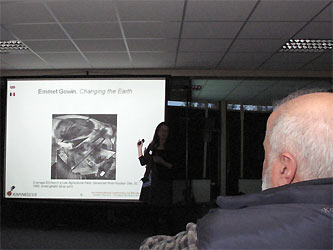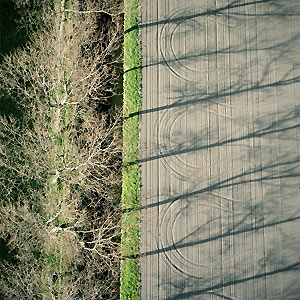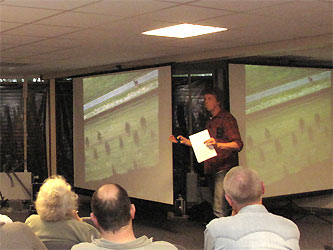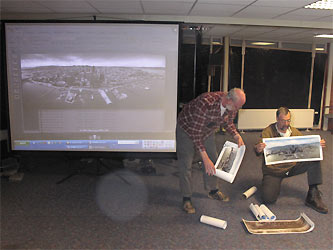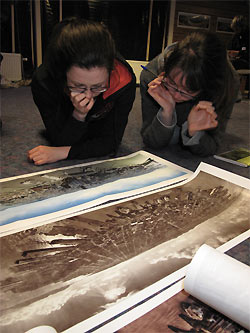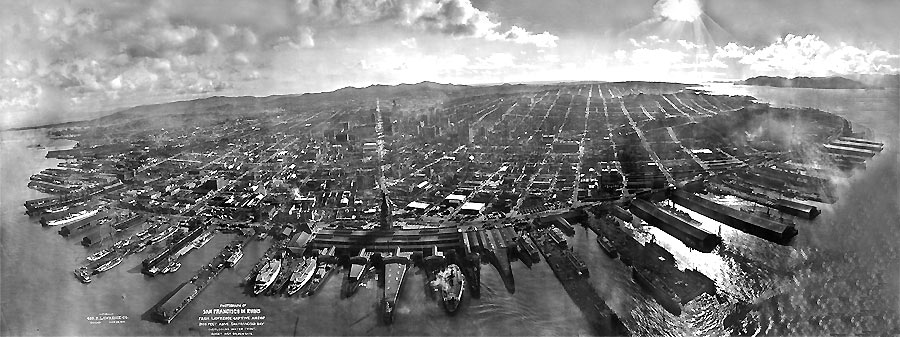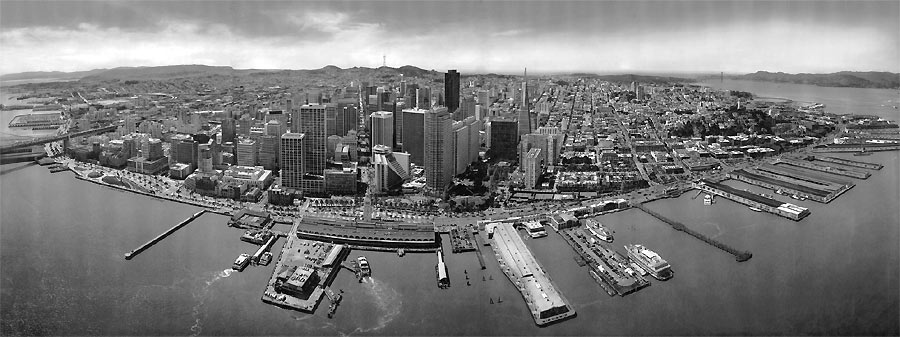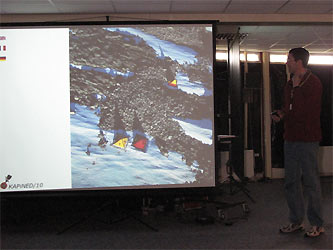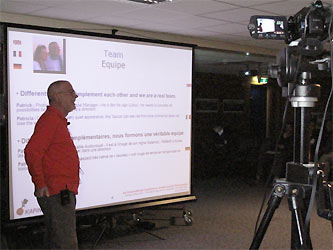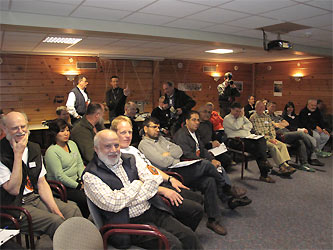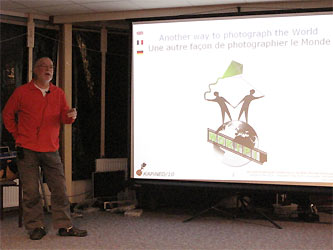 |
 |
| |
|
Gerco de Ruijter makes the first move…
Gerco is an artist who lives and works in Rotterdam. He discovered the aerial photograph by kite through a KAP book. His favorite playground: the Dutch landscapes for its contrasts of color, its agriculture, different matter. Gerco' s photography and the Dutch landscape appear to be the perfect match.
He presents a beautiful gallery, between art and abstract. He does not use a emitter/receiver video because he rather has the surprise of the discovery images. He takes photos of intuition and "feel" what his camera sees. Depending on the subject, his rig can be about twenty feet high, giving some abstract shots.
His camera is a fuji 4 ½ x 6 and photoshop serves for contrast and cropping.
It also uses a "kite-balloon" of 3m3 and has already made tests with a pigeon as a bearer for his camera. |
|
More about Gerco : His Website |
|
above : Amy Walsh
Amy Walsh
Another look : the aerial perspective, presented by Amy Walsh. How to document a landscape or provide an overview of the region. How man has changed the landscape.
To support her arguments, Amy shows us pictures of Emme Gowin and Gregory Crewdson (In the Hover series (1996-1997) of this american photographer, the photos taken from above, depict events that are inserted into a banal daily life.)
She also presents an excerpt of the Book of Edward Ruscha:
Thirtyfour Parking Lots, 1967. Then the KAP of E. Pastorino Diaz.
Meet Amy on her Website
|
above Gerco de Ruijter.
left: KAP of Gerco at MKgalerie - Rotterdam |
Heidy Baumgartner
A dream moment with the traditional kites Pacific presented by Heidy Baumgartner Lesage. For some of us is the discovery of the fishing by leaf kite in Malaysia to catch garfish. Then Heidy describes the Maori kite, often called "Te Manu Tukutuku" (Manu = bird). The kites were regarded as a link between sky and ground and are closely connected to “Matariki” (small star beam or Pleiades). Traditionally for Maori, “Matariki” announces the moment to celebrate New Year's day. They are manufactured from plants, decorated shells and feathers and are very light.
Then gallery of beautiful KAP, always with a flowform, from China, Indonesia, New Zealand and Tahiti of course!
|
| |
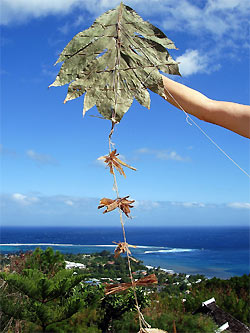
Tahiti kite leaf by Heidy - Plus de photos |
Pierre Lesage
Although Pierre Lesage's involvement in the "Risk and Security" by showing us pictures on the humorous luggage at some airports, I'd rather put him in this rubric because we really did dream.
I remember from his presentation: Travel light, practical,…
He explains that in December 2008, when he was preparing his expedition to Namibia, he discovered that the luggage trunk of the Cessna 180 was too small for his kites, as Dan Leigh R8 Delta.
He contacted Dan Leigh asking if he could develop a « travel » version of his R8 that could fit into a small tube of 50 centimeters. It is a great kite.
Pierre has always with him a small album of photos from KAP to easily explain the aerial photography and show the record.
|
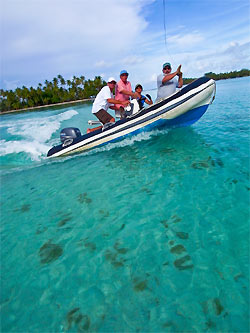 Kap of the coral reefs - Tahaa'a
Kap of the coral reefs - Tahaa'a |
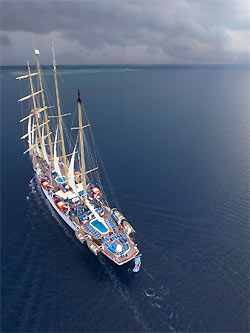 SV / Star Flyer - lagoon of Raiatea. SV / Star Flyer - lagoon of Raiatea.
|
|
|
|
|
Then we are entitled to a series of beautiful KAP that make us want to visit these far-off lands! From Namibia to Tahiti via Paris. And finally, aerial photos from the deck of cruise ships, fishermen, or even a zodiac (of the coral reefs of the island of Tahaa'a). Sometimes that’s hot! If you have time (much time) an invitation to travel through the gallery gallery of aerial pictures of Pierre and his Website
|
| |
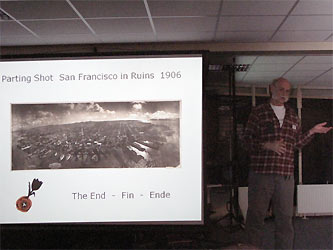 |
Henry Jebe
Henry Jebe's fascination with George Lawrence was triggered by an article on the KAP pioneer in the fall 1994 issue of KiteLines.
A few years ago he decided to honor Lawrence by recreating a replica of his camera and recapturing Lawrence's April 18th, 1906 photo "San Francisco in Ruins."
1906 : According to the New York Times, the Magnitude 7.9 earthquake and fire that destroyed San Francisco on April 18, was the first widely photographed disaster. Of all the photos documenting the devastation, perhaps none are as striking as George Lawrence’s famous kite aerial photograph, “San Francisco in Ruins,” taken 950-feet above San Francisco Bay.
|
|
| |
|
|
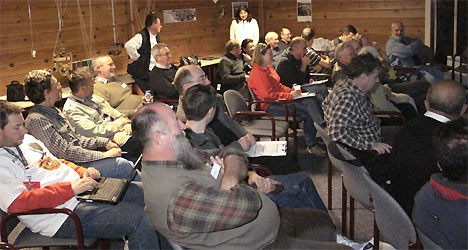 |
His 49-pound panoramic camera was suspended from a series of Conyne kites.
The result was a negative measuring 22 x 55 inches, capable of being enlarged to wall-sized prints with astonishing detail.
Lawrence’s foresight earned him a small fortune of $15,000 (more than $300,000 today) selling copies of his achievement.
Henry Jebe had intended to raise his camera with kites, as Lawrence had done, but he ran out of time to construct them.
In addition, air space restrictions, and common sense required the use of a helicopter.
|
|
| |
|
The new image was shot from the exact location as Lawrence achieved in 1906. You will find all the information about this feat:
ronkleinphotos.com/Lawrence On the website you can see the draw of 2006 and see the impressive details. You can also buy a copy of the draw.
Then Henry has captivated his audience showing panoramic prints of two pictures (1906 - 2006) We stayed a long rime in the room after his talk.
|
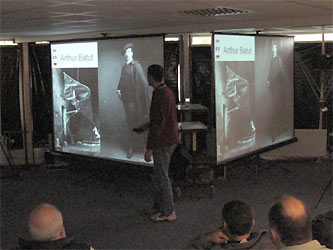 |
James Gentles
To stay in the KAP historic James Gentles present in English, the history of the first aerial photograph by Arthur Batut in 1888. Jose Wallois moreover made notices board on the pioneers of the KAP.
Wokipi worked on the history of aerial photography, Arthur Batut in general and on "Earth from Above .... Long before the advent of flying machines .."
Then James tells of the Mawson's Huts Foundation, established to conserve the unique, historical buildings known as Mawson’s Huts, base for one of the most significant expeditions in Antarctic history.
If you are interested in this expedition, you can find onmawsons-huts.org.au
|
|
| |
|
Patrick Mouchague
Patrick and I have a project for several years: Make a break of several years to take time for a world tour. Patrick is a professional photographer and we practice the kite for very many years. Linking these two passions became evident. Thus WOKIPI (World Kite Picture) is born!
Our departure is planned from late 2010, but depend mainly on the sale of our apartment, which will partially fund the trip. It is possible that we leave it until early 2011, but it is not important, we have time to spare, because for ten years thinking about.
|
| |
We had already done the aerial photography kite at the time of the argnetic film. We present our project but of course we also come to Kapined to meet, share and learn.
We'll leave with a rokkaku, a delta and a flowform (Sutton FlowForm 16 from Kapshop). For rigs: one handmade rig, one AutoKAP and one with a video feedback, but less specific than DuneCam. In fact, we had a problem with our Ricoh GX200 during Kapined, which can also happen on a journey and we wish therefore a more universal rig.
When there will be no wind, we will also use a solar balloon, functions as a hot-air-balloon very small but that does not burner or other heat source except that provided by the sun.
During our trip we will try to update our Website depending on connection options. Waiting for the start we will improve our technique of aerial photography. |
| |
| |
| |
|

